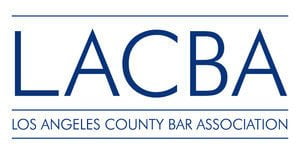Thanks to a confusing patchwork of state knife laws, Californians who choose to carry knives for professional or personal reasons may inadvertently and unknowingly commit a criminal offense.

california knife laws – san pedro criminal lawyer don hammond
There are at least six different sections of the California Penal Code which directly regulate which types of knives may be lawfully possessed and/or carried in California.
Over time, California legislators have approved a sometimes-confusing patchwork of knife laws regulating the possession and carry of knives and related cutting tools and weapons. Some of the most relevant sections of the California Penal Code include:
- 21310 PC, carrying a concealed “dirk” or “dagger”.
- 21510 PC, carrying a switchblade with a blade longer than two inches.
- 12020 PC, unlawfully manufacturing, carrying, selling, or possessing dangerous weapons.
- 10 PC, possessing a knife on school, college, or university grounds.
- 417 PC, brandishing a weapon.
Types of knives regulated by California knife laws
Generally, there are three broad categories of knives under California law:
- Knives which are permitted to be carried openly, but not concealed.
- Knives which are permitted to be either carried openly or concealed.
- Knives which are illegal to carry under any circumstances.
Knives restricted to open carry only
Under California knife laws, a large hunting or survival-type knife may only be carried openly in a sheath, and is unlawful to carry while concealed.
California has an open-carry knife law that permits the carry of certain knives when placed in a sheath hanging from one’s waist in plain sight. These knives are referred to as “dirks” and “daggers” under California law and are defined by 16470 PC as:
- A knife or other similar instrument with or without a hand guard; AND
- That is readily capable of being used as a stabbing weapon; AND
- May inflict great bodily injury and/or death.
California’s knife laws prohibit these weapons from being concealed on a person’s body or in a briefcase, handbag, backpack, or any other similar container. Examples of dirks and daggers include hunting and survival type knives, machetes, khukuris, short swords, and other fixed-blade knives. But other instruments could also potentially qualify: ice picks, chef’s knives, and even scissors have the characteristics of a dirk or dagger under California knife laws. Likewise, folding knives that are locked in the open position may only be carried openly in a waist sheath under 20200 PC .
Knives which are permissible to carry concealed
Folding knives may be carried concealed as long as they are closed. These knives include pocket knives, locking folding knives, and box cutters. However, many counties and municipalities have stricter laws that override state knife laws. For example, limitations on the permissible length of a knife blade are common.
Knives which are not legal for carry in California
Finally, there are some knives which cannot be carried openly or concealed (or purchased or sold) under any circumstances according to 17235 PC. These include gravity knives, switchblades and balisongs with blades longer than 2”, spring loaded knives, undetectable non-metal knives, and novelty/specialty knives. Novelty/specialty knives include any knife that is disguised or has a misleading outward appearance, such as:
- Belt buckle knives
- Lipstick case knives
- Air gauge knives
- Cane swords
Elements of the crime
In order to obtain a successful conviction for carrying a concealed knife, the prosecution must prove beyond a reasonable doubt that the defendant:
- Had a knife with the characteristics stated in the statute on his or her person, or under his or her control; AND
- Knew the knife was prohibited.
There is no required element that the defendant intended to use or actually used the knife as a weapon. Simply being in possession of a prohibited knife carried on one’s person, or having control over (constructive possession) of a prohibited knife is unlawful.
Criminal penalties
Carrying a concealed dirk or dagger is a wobbler, meaning it can be charged as a misdemeanor or a felony offense. A misdemeanor conviction can result in any or all of:
- Up to one year in county jail.
- A fine of up to $1,000.
- Probation.
A felony conviction subjects the defendant to any or all of:
- 16 months to three years in county jail.
- A fine of up to $10,000.
- Probation.
Unlawful possession of a switchblade over 2” under includes any of the following acts, according to California knife laws:
- Carrying it on one’s person, either openly or concealed.
- Transporting it in the driver or passenger area of any motor vehicle.
- Possessing it in any public place.
- Selling, offering to sell, or exposing it for sale.
- Loaning, giving, or transferring possession of the knife to another person.
Any of these actions is a misdemeanor that is punishable by any or all of:
- Up to six months in county jail.
- A fine of up to $1,000.
- Probation.
Additionally, the defendant may be subject to sentencing enhancements if any of the following aggravating factors apply:
- Gang association.
- Prior criminal record and/or history of violent behavior.
- Lack of cooperation with law enforcement.
- Intent to use the switchblade as a weapon.
However, if the defendant was carrying a switchblade knife while it is locked in the open position, they may face charges of unlawful carry of a dirk or dagger, which has a longer jail sentence.
Manufacturing, possessing, or selling a prohibited knife is a wobbler and is generally subject to the same penalties as carrying a concealed dirk or dagger.
Legal defenses
There are several possible legal defenses to knife charges. They include:
- The knife does not meet the legal definition of one that is prohibited.
- The defendant was unaware they were carrying a prohibited knife.
- The defendant’s knife was carried openly in accordance with law.
- The knife was not readily capable of being used as a stabbing weapon.
- The weapon was found during an unlawful search.










